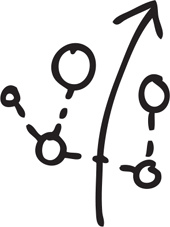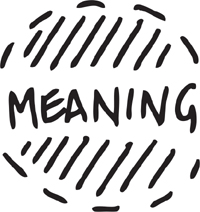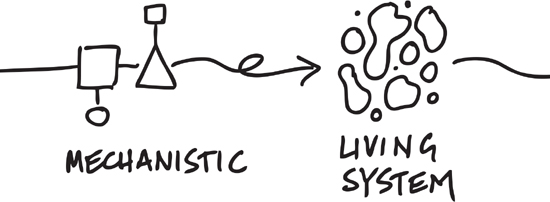
Download PDF Excerpt
Rights Information
Going Horizontal
Creating a Non-Hierarchical Organization, One Practice at a Time
Samantha Slade (Author)
Publication date: 11/27/2018
In this book, self-management expert Samantha Slade presents seven concrete practices to help your organization flatten its existing hierarchy and develop a horizontal organization. The result will be enhanced creativity, greater growth, and a increased employee retention and productivity—and a better bottom line.
These days, more than ever, successful organizations must respond quickly and nimbly to change—they need every employee's best thinking. A horizontal organization creates an environment of true collaboration, respect, and openness. It allows everyone more freedom to express unconventional ideas or to work through issues that are getting in the way of organizational goals. And it's a more human way to organize—after all, we function perfectly well in our day-to day lives without someone telling us what to do.
But when an organization decides to go horizontal, it can be overwhelming for both managers and employees. Slade offers a practical, proven, incremental method to help organizations of all kinds and sizes ease in to a non-hierarchical model. She includes techniques for using your organization's purpose to stay focused and aligned, developing shared decision-making, creating a mutual feedback culture, nurturing autonomy, holding co-managed meetings, and maintaining an environment of collective learning.
Going Horizontal will help organizations become more adaptive, collaborative and innovative, which is vital in today's highly competitive and constantly-evolving world.
Find out more about our Bulk Buyer Program
- 10-49: 20% discount
- 50-99: 35% discount
- 100-999: 38% discount
- 1000-1999: 40% discount
- 2000+ Contact Leslie Davis ( [email protected] )
In this book, self-management expert Samantha Slade presents seven concrete practices to help your organization flatten its existing hierarchy and develop a horizontal organization. The result will be enhanced creativity, greater growth, and a increased employee retention and productivity—and a better bottom line.
These days, more than ever, successful organizations must respond quickly and nimbly to change—they need every employee's best thinking. A horizontal organization creates an environment of true collaboration, respect, and openness. It allows everyone more freedom to express unconventional ideas or to work through issues that are getting in the way of organizational goals. And it's a more human way to organize—after all, we function perfectly well in our day-to day lives without someone telling us what to do.
But when an organization decides to go horizontal, it can be overwhelming for both managers and employees. Slade offers a practical, proven, incremental method to help organizations of all kinds and sizes ease in to a non-hierarchical model. She includes techniques for using your organization's purpose to stay focused and aligned, developing shared decision-making, creating a mutual feedback culture, nurturing autonomy, holding co-managed meetings, and maintaining an environment of collective learning.
Going Horizontal will help organizations become more adaptive, collaborative and innovative, which is vital in today's highly competitive and constantly-evolving world.
—Susan Basterfield, thought leader on the future of work, author, and member of Enspiral
“Samantha Slade brings the keen eye of an anthropologist to the study of organizations and succeeds admirably in highlighting truths about our collective humanity and how to do things better. Welcome to the self-managed workplace of the future.”
—Doug Kirkpatrick, US Partner, NuFocus Strategic Group, and author of Beyond Empowerment
“Samantha Slade offers a much-needed alternative to our current systems of organizing. Her book is as refreshing as it is personal and will be indispensable for those looking to bring more humanity into their organizations.”
—Joel Bothello, Assistant Professor, Department of Management, John Molson School of Business, Concordia University
“Thank you Samantha Slade, for not only showing us why rigid hierarchies are no longer fit for humanity's evolutionary purpose, but also, how to create ecosystemic, horizontal organizations instead. For those who feel trapped inside organizations that treat people like morons or machine parts, help is at hand.”
—Stephen Huddart, President & CEO McConnell Foundation, Canada
“Going well beyond horizontal theory and concepts, this work is social practice in action; a wonderful companion for anyone who senses that reconnecting with our true human nature in our work is the only way forward.”
—Mary O'Keeffe, Director, Loomio (New Zealand)
“Samantha Slade offers a much-needed alternative to our current systems of organizing. Her book is as refreshing as it is personal and will be indispensable for those looking to bring more humanity into their organizations.”
—Joel Bothello, Assistant Professor, Department of Management, John Molson School of Business, Concordia University (Canada)
“This book is for anyone who's ever wondered what the future of truly fulfilling work could look like.”
—Melissa Aronczyk, Associate Professor of Journalism and Media Studies, Rutgers University (USA)
“Samantha Slade—and this book—is what the world of work needs more of. Sparky thinking, applied methodologies, and humanist principles.”
—Perry Timms, HR Most Influential Thinker 2017; founder PTHR; and author of Transformational HR (UK)
“Samantha is on the leading edge of self-management for organizations. She is breaking ground to discover and share the new ways we can work together that we are all starving for.”
—Amanda Hachey, Director, NouLAB (Canada)
“In the transformation of our society to become more human, Samantha is a reference.”
—Étienne Collignon, President, TeamFactory, and learning systems teacher (France)
“If there's anyone who knows how to structure workplaces in new, more effective, more energizing ways, it's Samantha Slade. Her book, Going Horizontal, is a masterwork in how to turn a sluggish hierarchical organization into one that's egalitarian and alive.”
—Mark Levy, founder of Levy Innovation LLC and author of Accidental Genius (USA)
“Samantha Slade has, with her own life, taken a bold journey into the landscape of how we can evolve our organizations, lead together and focus on the purposes we choose to serve. I invite you to listen to her, understand her message, be inspired and enjoy your own practice for a more humane and kinder world.”
—Toke Paludan Moeller, Sustainable entrepreneurship pioneer, CEO Interchange, Art of Hosting steward (Denmark)
“Samantha outlines in clear, concrete, and highly accessible language tested practices, ranging from the personal to the systemic, that support participatory ways of working to flatten and democratize organizations. I can easily envision this book quickly becoming a standard reference for those involved in organizational development and change design at every level.”
—Rosemary C. Reilly, Graduate Program Director, MA in Human Systems Intervention, and Associate Professor, Concordia University (Canada)
“A brilliant distillation of lived experience, field research, and more academic research—transformed into simple practices to live by. It turns all the philosophical discussions about collaboration and self-organization into incredibly practical and doable practices.”
—Caroline Rennie, cofounder of Gen-H (Switzerland)
“This is a brilliant field guide from a practitioner and organization designer who has dared to explore, experiment with, and engage with the new ways of working and being. This book must be in the list of essential reading for the #futureofwork.”
—Sahana Chattopadhyay, Asia-Pacific thought leader on the future of work (India)
“Going Horizontal is a gift to anyone eager to see beyond the trappings of traditional hierarchy and explore new ways of working and being.”
—Brent Lowe, Coach for founder CEOs, and author (Canada)
“Samantha Slade shares her knowledge and experience with accuracy, wisdom, and amazing gentleness. This book and the proposed practices are a truly precious help and compass toward more horizontality in my organization.”
—Damien Versele, CEO, De Sleutel (Belgium)
“Sam Slade's Going Horizontal finally brings the notion of cocreation out of the theoretical realm and makes it practical and achievable.”
—Roxane Maranger, Professor of Biology, University of Montréal, and President-Elect, Association for the Sciences of Limnology and Oceanography (Canada)
“Going Horizontal is a key piece in the field of organizational consciousness and working transformatively in the 21st century.
—Melinda Várfi, Cofounder of Organik (Hungary) and Resonanz (Austria)
“Going Horizontal speaks to the three innate and universal psychological needs for humans to function optimally: self-direction, competence, and relatedness. If you want to increase the probability of having a workplace where fun, purpose, and meaning create a greater good, read this book.”
—Jacques Forest, organizational psychologist; Professor, School of Management, Université du Québec à Montréal (Canada)
“The time has come for every enterprise to reimagine and redesign how it works, and Going Horizontal will be a key resource.”
—MJ Kaplan, Partner, The Ready, and Board Member, Loomio (USA)
“I especially appreciate the ‘how to' approach as this is where you will struggle most when implanting changes that are based on sharing and participation.”
—Bernd Reichert, Executive Director, Executive Agency for Small and Medium-Sized Enterprises (Belgium)
“Samantha Slade's mastery of group dynamics is inspiring and is at the level of artistry. What a pleasure to have benefited from her teachings.”
—Anne Charpentier, Director, Montreal Insectarium, Space for Life (Canada)
“Samantha embodies a new way of seeing work and living it, and that is how she has helped transform our organization, step by step.”
—Huguette Robert, Director, and Steeven Pedneault, Social Designer, Présâges (Canada)
“More than ever, the public sector needs talent like Samantha to learn a basic human skill for our democracy: cooperation for social innovation.”
—Cécile Joly, Public Innovation and Learning Lab, Public Administration (France)
“Read this book to learn how to see the world in a new perspective and develop a new set of muscles for building the commons!”
—David Bollier, author of Think like a Commoner (USA)
“Discover how to step into a more mature and responsible management paradigm where human beings can get up to a different level of mastery and purpose alignment. This book has challenged my own beliefs and ideas about my responsibility to be the change.”
—Ana Manzanedo, Governance Connector, Ouishare (Spain)
“Samantha embodies the principles she upholds: a profound respect of the contribution of each individual and mastery of the science of efficient collaborative processes.”
—Manon Poirier, Executive Director, Quebec Chartered Professionals in Human Resources (Canada)
“Samantha Slade deeply understands the power and vitality of nonhierarchical cultures. I highly recommend Going Horizontal as a tool when developing your horizontal culture.”
—Sarah Houseman, Governance Researcher, La Trobe University (Australia)
“With Samantha Slade's book, we now have an insightful resource to help people understand how to operate effectively in this new paradigm. This is the ultimate companion for going horizontal.”
—Edwin Jansen, Head of Marketing, Fitzii (Canada)
“This book is a must-read, discussing seven domains that are critical in a horizontal context.”
—Ivo Bols, CEO, Irisoft Solutions (Belgium)
“Samantha's creativity and way of being enliven the collective intelligence methods that she embodies.”
—Denis Cristol, National Center of Territorial Public Sector (France)
“Samantha succeeds in opening up collaboration perspectives that are little known. She reminds us that we are never too small to act.”
—Renée Ouimet, Director, Quebec Mental Health Movement (Canada)

ONE
WHY GO HORIZONTAL?
There is no need to wait for permission from hierarchy to begin practicing non-hierarchical ways.
Human Nature Is Non-hierarchical
Non-hierarchical ways are the modus operandi of human beings. They are part of our DNA. Like geese flying south and bears hibernating, we are a self-organizing species.
We function every day without a boss. We feed ourselves, keep up our homes, care for each other, plan big projects, celebrate victories, and mourn losses. Every day, we organize ourselves with those around us, adult to adult. We figure things out together. Most of the time, we appreciate the input and support others offer. When that support tips into telling us what to do, we get wary. We are properly allergic to the notion that someone could have the power over us to make us do something we don’t want to do. For the most part, we figure out how to work with different opinions, preferences, and perspectives. We manage to accomplish things together, whether it is building a snowman or organizing a birthday party. If a friend or partner tries to “manage” what we do, decide, or think, that can compromise the relationship. We tend to stay in our various communities as long as they are non-hierarchical. Simply put, we need horizontal workplaces because we are naturally a horizontal species. Working against this instinct is what has lead us to a world where 85 percent of people are disengaged from their work, work itself is a negative word, and movies like Office Space become cult classics of catharsis. We can do better!
In my workshops I ask participants to identify examples from their personal lives where they figure things out with others, without anyone having authority over another. We don’t tend to think about our world in this way. People really struggle to find examples, though in reality they abound: we decide what music is played in the house, we get groceries for the house, we get married to whom we want. We cross paths with people we know and don’t know at the grocery store, the swimming pool, the park, without anyone telling us what to do. There is no chain of command in daily life. This is not to say that it is easy, but I think it is fair to say we wouldn’t want it any other way. The other way is the making of science fiction scenarios.
Non-hierarchical Ways Are Possible and Present in the Workplace
Despite human nature being horizontal, the organizational model and culture we have given ourselves for work is vertical. Of course, you can’t just take non-hierarchical ways from the personal realm into the work realm. There are some fundamental differences that need to be taken into account. At work we are contractually tied to our organizations through formal agreements that we are bound to. We receive regular paychecks that we rely upon. We are accountable to the organization and its purpose. We are under pressure to perform and ensure financial viability. We must adhere to a whole body of legal requirements.
While our organizations could have developed in non-hierarchical ways, and there are many examples of non-hierarchical societies throughout history and across cultures, the model that prevailed was a vertical one. Some might say it was for the sake of efficiency and scale, though there are examples of efficient large-scale non-hierarchical organizations. Others might point out that it was a model that supported the extractive and colonialist values of earlier times. Certainly, human well-being was not the focus at the origins of the hierarchical organizational model. The result today is such that the current dominant organizational culture and structure is not aligned to human nature.

When I am brought into an organization to help them with this transition, I often hear things like “This organizational chart might look vertical, but really we invite you to talk to people in the company as if it were horizontal.” Or, from someone in upper management, “I’m not really the boss; people don’t even use that term with me.” This is not going horizontal; it is hierarchy that likes to pretend that it is not, that pays lip service to the concept without doing the real shift.
When I speak to people who truly love their work, they say things like “My boss trusts me” or “I have freedom to do what I want” or “I’m encouraged to try things out.” All these statements are elements of more human, natural ways of functioning whereby people feel like they are being treated with mutual trust and care, as adults. In many places human beings are being treated fairly as equals despite the vertical culture. In many other places, just the opposite is true. You know where you stand with your own stories and experiences.
Hierarchy Won’t Take Us into Our Future
The 9 to 5 office with the hierarchical organizational chart is showing serious signs of fraying. The dominant management model is expensive. Management experts Gary Hamel and Michele Zanini estimate that the cost of micromanagement is $3 trillion annually in the United States alone.2 The human cost is also alarming. Worker engagement is not getting better despite the billion-dollar industry making efforts to effect improvement. Only 15 percent of the world’s workforce are actively engaged in their jobs.3
The major sources of psychological distress in the work-place are connected to hierarchical culture: poor relationship with one’s superior, lack of recognition, and low participation in decision making and governance.4 Furthermore, organizations are struggling to attract and keep employees. High-talent individuals are leaving the workplace to seek out greater learning and development.5 Organizations face work-force challenges that are a serious issue and a growing trend. This trend touches me deeply. Human suffering increases with our current model.
In the meantime we are entering a new era. We are finding a general nonacceptance of many organizational practices that used to be tolerated: from inequity in pay to rigid rules. Professionals are honing their personal brands and positioning themselves for a market in which employers are competing among themselves to hire them. The freelance market continues to grow and organize into collectives to provide shared services and social safety nets usually offered by employers.6 Networked organizations are growing. A parallel infrastructure of co-working networks and wholly decentralized companies is growing for digital nomads and location-independent workers who care about freedom and beauty in their workspace. The upcoming workforce is connected to so much information, possibility, and creativity that the traditional vertical organizational system seems under-equipped to tap into its full potential.7 The internet mind-set is not a hierarchical mind-set. Millennials do not understand why information and authority cannot be dynamic and flowing. When an organization shifts to a transparent culture of shared power and mutual responsibility and care, then it can truly begin to respond to the challenges modern organizations are facing. A recent report on the future of organizations concludes that the ability to “scale trust” is key for the organization of the future to offer space for the new worker.8
Artificial intelligence is poised to shake our work world. Some say 40 percent of today’s jobs will disappear.9 We know that the obedience and compliance mind-set that standardization bred will need to give way to empathy, creativity, and real-time decision making, for example. These capacities are valued and thrive in horizontal cultures.
Depending on your perspective, all this can be an invitation, an opportunity, or a wake-up call to revisit what we have been taking for granted in the way our organizations function. The work is deeper than we might have envisioned; it requires new mind-sets, new personal and collective practices, and new organizational models. There are no recipes for the depth of what it involves. It is beyond an issue of productivity; it speaks to the question of how we want to be together as human beings.
Non-hierarchical ways are needed for a future functioning organizational culture, and they are well positioned for the expectations and culture of the upcoming generation.
What Does a Successful Horizontal Organizational Mind-Set Look Like?
Horizontal ways deal with the pervasive and detrimental issue of organizational disengagement and positively contribute to the mental well-being of humans. When humans are taken care of, they get things done, and that is what organizations need: to stay in movement, to stay ahead, to stay relevant. Let’s look at some specifics: when we say employees are more engaged, what does that mean? Here are some traits that show the difference:

Disengaged worker |
Engaged worker |
Executes tasks, avoids work |
Shows up and works with spirit and care |
Has little desire to learn new things |
Is curious and proactive to grow and develop |
Complains, blames, victimizes |
Contributes ideas, offers support for others |
Shows indifference toward colleagues |
Invests in colleagues and relationships |
Shows indifference toward the organization’s success |
Imagines possibilities, co-creates, proposes |
Buurtzorg is a home-care company in the Netherlands that was created in 2007 with a horizontal structure. The organization is based on trust and works with small teams of 10 to 12 nurses who have the authority to do what would usually be done at the management level—human resources functions, budgeting, scheduling, and performance reviews. A central office of 50 people supports (not manages) the 14,000 nurses. After seven years of existence, Buurtzorg had taken two-thirds of the market in the Netherlands. Today, Buurtzorg is expanding around the world to countries such as the United Kingdom, the United States, Japan, and China. The organization has been the subject of studies that demonstrate how it is a success in achieving high levels of client satisfaction, employee well-being, and profitability.10
Here are five indicators of a successful non-hierarchical organization. Keep in mind that this is the gold standard; these metrics can take years of small iterative changes to achieve.
1. Colleagues Hold Each Other Accountable, and Responsibility Is Shared.
Some people think a that non-hierarchical mind-set means no management at all. The reality is quite the opposite: a non-hierarchical mind-set holds everyone to a higher standard. Many activities that managers once were responsible for are distributed, and thus the responsibility becomes shared. A whole team participates in the activities that a single manager would usually hold: setting objectives, organizing work to be done, setting pay, supporting and motivating one another, holding one another accountable to performance, and supporting one another’s development.

2. People Own Their Personal Leadership.
The premise of a horizontal mind-set is that people can figure things out for themselves, among themselves. There is no need to have someone with authority give permission or approval or do things on behalf of others. We have come to think of leaders as those persons at the top of the organization. This association is false. A non-hierarchical mind-set is about owning our personal leadership no matter where we might be positioned in an organization, no matter the nature of our work. If we see something not working, we act on it. We take care of things, and we make proposals.

3. People Do Not Feel Imposed Upon, and Yet They Honor Their Commitments.
People do not feel imposed upon by one another in a horizontal organization. This does not mean people do whatever they want. Understanding this requires nuance. In some cases authority should be distributed and a group will decide things together, and in other cases the group’s interest is best served when someone decides for the group (like when a seaplane pilot tells passengers the safe spots to sit in a plane). For a horizontal mind-set to work, people must honor their commitments, or else they will be imposing on their peers. It is the very empowerment of feeling ownership of the process that inspires people to honor those commitments.

4. Actions Are Both Participatory and Responsive.
Horizontal does not mean chaos! Successful non-hierarchical culture is both participatory and responsive. Things get done. We are hardwired to think that opening up processes to a wider group adds time and pain. Of course, if you open up the responsibilities without thoughtful process, things will not get done. Many of us have experienced that. Non-hierarchical ways replace this free-for-all with structures that are proven to manage participatory culture smoothly. As the chain of command is lifted, the hierarchical structures are replaced by lighter, less hierarchical structures: roles with purpose, accountabilities, and metrics that matter; decision-making methods and spaces that are explicit; meetings that are well documented; people who are aware of what everyone else is doing; mechanisms that strengthen relationships, and work through conflicts. With successful self-organization, even when there is a crisis or a stressful deadline, we do not revert back to fear and control. We can instead fall back on the trust we have built with colleagues.

5. The organization is equitable, generative, and fair.
Non-hierarchical organizations are challenged to have a more meaningful purpose and more equitable ways—whether in their salaries, profit sharing, environmental impact, or getting along with others despite differences. These ways are a deliberate step away from extractive, coercive, patriarchal ways. Those are strong words, but they do reflect the paradigms from which our current top-down organizational frameworks and culture have grown. The only way an organization can be fully horizontal is if the organization has meaning for its workers. Then it can easily relinquish control and allow people to own their personal leadership and contribute to the organization.

Getting Unstuck When Going Horizontal
How can you bring about this new way of being without getting frustrated and overwhelmed or without having everything backfire? Moving from aspiration to action is not easy. We carry within us a load of assumptions that support top-down ways and hold us back from developing new behaviors. We are hoping for some easy instruction guide or recipe book, but we know that each organization has its own path to self-management. Some are coming to horizontal ways accidentally, some intentionally, and some begrudgingly. The transition sounds exhausting. Despite genuine and growing interest in more horizontal ways of working, organizations are getting stuck in making the transition.
Here’s an example. A Canadian bank sets up a new initiative: management invites employees who see a process or way of working that doesn’t make sense to bring it forward so it can be changed. This initiative sounds great, and the intention is good, but what are the chances it will get stuck? Employees put their requests in the hands of management, who have decision-making and action-taking power—it’s the parent-to-child culture at play. If an idea doesn’t get enacted, not only will there be no change, but employees will become less engaged, not more. Fully stepping into an adult-to-adult partnership culture is necessary for such a change in process to flourish. Short of working on these fundamental shifts, most change processes will stall.

Most people think that when they change to a new system, they need to be good at it from the get-go and have figured out all the details of the journey. The shift is projected to be huge and comprehensive, and this is overwhelming. People also assume that they need to start a revolution with full buy-in from organizational leaders before they are able to do anything. It is no wonder most organizations get stuck!

Whatever happened to just trying things out and learning from them? That is how we all learned to walk and talk. If we are changing to a new system, we need to give ourselves space for errors and learning. Otherwise, what you get is only fair-weather projects. That is, as soon as a situation or challenge arises, and invariably one will, we scapegoat the self-managing initiative and return to conventional ways. We might even go so far as to call it “dogmatic” or “risky” or “inefficient,” as though conventional methods are free from dogma, risk, and inefficiency! All the terms we can come up with are shields we build to protect us from changing the paradigm. The reality is that all of us need to learn these horizontal ways and bring them into play within our specific work contexts and domains.
Most organizations have been set up with the goal of making them well-tuned machines that allow them to plan and control into a predictable future. This mind-set is what we call “mechanistic,” and it involves employees working individually and in highly specialized roles. Humans in these systems have internalized mechanistic reflexes, and shifting into a horizontal mind-set requires adopting a “living-systems” way of thinking.

Living-systems organizations are like a city where things are in constant flux, ever responding to changes within and around them. Of course, even if we understand and accept this principle, that does not mean that we are able to operationalize it on a daily basis within our work world. The assumptions and structures of most organizations invite us to do just the opposite. There is no magic wand for going horizontal, and there will be bumps in the road. The path forward is through practice.














